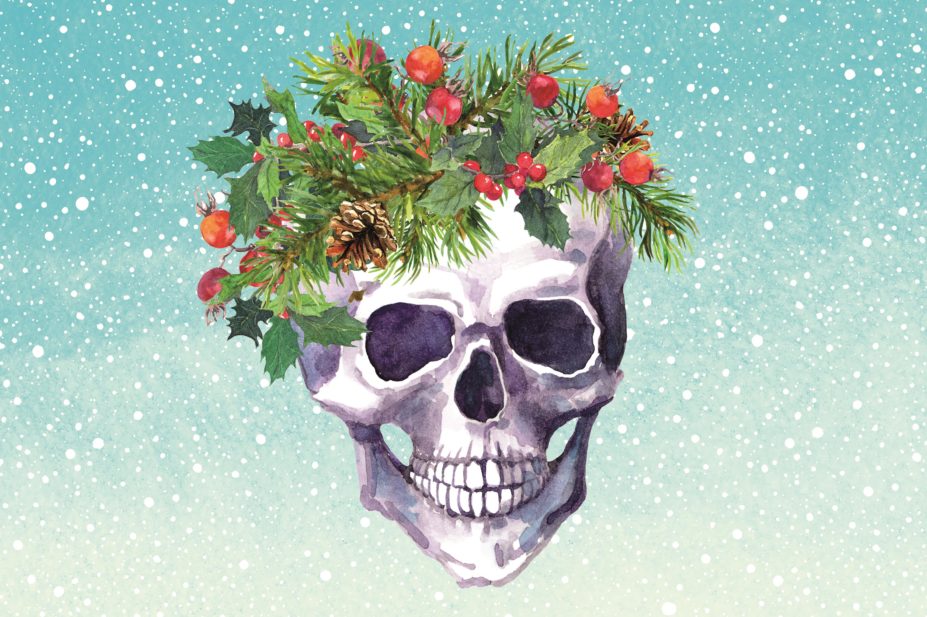
Shutterstock.com
A Christmas tradition is to fill the home with evergreen plants — particularly holly, ivy and mistletoe, but also pine, spruce or fir, as Christmas trees, and laurel and yew, as components of Christmas wreaths. A more recent custom is the display of houseplants with colourful flowers or foliage, such as poinsettia, amaryllis and Christmas cactus.
A common belief is that many of these plants are toxic and should be kept away from children. But is there any justification for such scare stories?
Let’s start with holly. Its bitter berries are generally deemed poisonous, but their toxicity has been grossly exaggerated. The National Poison Information Service (NPIS) says that eating a few holly berries may cause no more than a mild gastrointestinal upset, treatable with “a small glass of water, milk or juice”. So holly is hardly a health hazard.
Ivy, we are warned, contains saponins that on ingestion are hydrolysed to toxins that cause laboured breathing, convulsions, vomiting, paralysis and coma. But ivy berries are so bitter that no one is likely to bite into more than a couple unless attempting suicide. And the last documented case of severe ivy poisoning was a century ago. However, handling the leaves may occasionally cause dermatitis, and ivy brought indoors should perhaps be washed because dust from the leaves may incite sneezing and eye irritation.
What about mistletoe? Its berries are certainly toxic but, as with holly and ivy, their unpleasant taste means that no one is likely to eat them by accident. Consumption may lead to blurred vision, stomach cramps and diarrhoea but is not likely to cause serious problems. The leaves may be more poisonous than the berries, but who would accidentally eat bitter-tasting leaves?
Laurel is certainly not toxic. Indeed, its leaves are commonly used in cooking, when they are known as bay leaves. However, confusion with the similar-looking but unrelated cherry laurel could theoretically present a problem because cherry laurel’s leaves release hydrogen cyanide.
Christmas trees are not normally a health hazard, although their needles can cause painful cuts in the mouth and throat if a child tries to swallow them. Artificial trees may actually be more hazardous because they often contain lead.
And yew? All parts of the yew are toxic and consumption can induce tachycardia, muscle tremors, convulsions, collapse, breathing difficulties, circulation impairment and eventually cardiac arrest. But fatalities are rare and again generally occur only after deliberate consumption in a suicide attempt.
Poinsettia, popularly posited as poisonous, is actually pretty harmless, even though some of its close relatives are toxic. Fears of toxicity date back a century to the reported death of a two-year-old after eating a single leaf. But this claim was based on hearsay and subsequent studies have found no evidence of severe toxicity. Nevertheless, ingestion may lead to mild symptoms of nausea and vomiting, and contact with the milky sap may cause dermatitis.
And how about amaryllis? Like many other plants grown from bulbs, amaryllis contains lycorine, an alkaloid that can cause nausea, diarrhoea and vomiting. But its concentration is so low that you would have to chomp through many amaryllis bulbs to induce any symptoms. Claims that Christmas cactus is deadly are also hard to substantiate. As with holly, the NPIS relegates it to the list of substances that may only cause mild gastrointestinal upsets.
So which of these seasonal plants poses the greatest health risk? My answer is mistletoe — but not because of its toxin content. The hazard derives from the seasonal tradition of stealing a kiss beneath a sprig of mistletoe, an activity that may well lead to the transfer of infectious disease.
Diseases transmitted through the exchange of saliva include infectious mononucleosis — known as the “kissing disease” because it spreads so easily in this way. Colds, influenza and other respiratory infections are also disseminated through saliva, as are an array of streptococcal infections, including gum disease and pharyngitis (“strep throat”). The spread of hepatitis B virus via saliva is also well documented.
Other infections are transferred through contact with open sores in or around the mouth. Hand, foot and mouth disease is easily spread in this way, as is oral herpes (cold sores), particularly when a blister leaks fluid.
So if you are worried about the health risks from Christmas plants, forget about toxins in decorative plants: just be careful who you kiss under the mistletoe.

